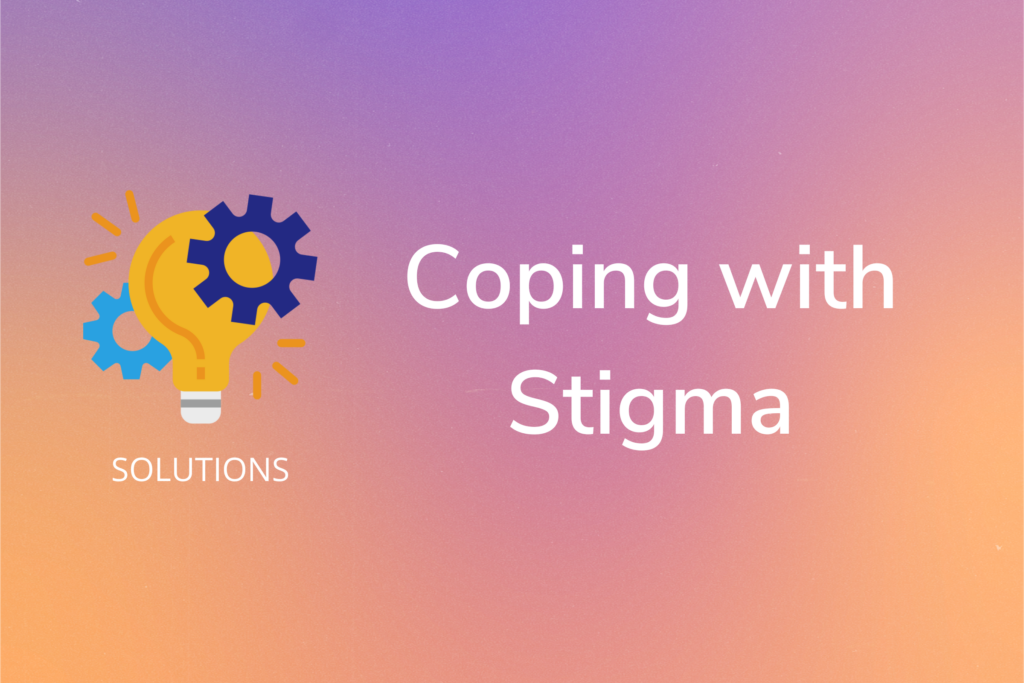To simplify the many things we encounter in the world each day, people tend to categorize things. This categorization process is also applied to people, such that we very quickly and easily classify someone according to what we perceive to be their gender, race, age, and sexual orientation. While this cognitive heuristic makes processing people easier, it also tends to result in stereotypes, or, overgeneralizations about the characteristics of certain social groups. Women, for example, are generally perceived to be more emotional than men, while men are perceived to be more assertive than women.
Stereotypes may differ in the extent to which they’re negative, depending on the social group. Negative stereotypes are particularly strong for marginalized groups such as women, people of colour, the elderly, and LGBT+ individuals. These stereotypes may also lead to stigma: “the negative social attitude attached to a characteristic of an individual that may be regarded as a mental, physical, or social deficiency. A stigma implies social disapproval and can lead unfairly to discrimination against and exclusion of the individual”, as defined by the APA Dictionary of Psychology. Negative stereotyping and the resulting stigma are, unfortunately, a normal, day-to-day reality for many marginalized groups members.
However, research suggests that people belonging to marginalized groups, who find benefits associated with their identity, can be more psychologically resilient and better adjusted. Such individuals may experience “stress-related growth”, defined as positive outcomes that result from going through difficult experiences. For example, among sexual minority group members, stress-related growth has been associated with lower internalized homophobia (i.e., negative feelings about one’s own sexual orientation). A wealth of research has demonstrated that marginalized group members experience higher stress, anxiety, and depression, but how these individuals may adaptively cope with the greater difficulties associated with belonging to a marginalized group has largely been overlooked.
Harnessing the benefits of stress-related growth can be achieved by focusing on what one has learned as a result of their group membership, e.g., “As a result of coming to terms with my sexual identity, I learned to be myself and not try to be someone others want me to be”, and “I learned to communicate more honestly with others” (two measures from the adapted Stress-related Growth Scale). Finding meaning in difficult situations leads to more positive emotions, which in turn promote more flexible and creative thinking – an important aspect of effective emotion regulation strategies.
This coping mechanism may be viewed as a middle ground approach between the typical depictions of minority group members as either barely surviving at subsistence levels psychologically, or overtly fighting against their systematic oppression. Resistance may develop from stigmatized individuals endowing their social group with meaning according to their own perspective rather than adopting the socially dominant view of their group – the individual may claim their own identity and shape it according to what makes sense to them, rather than viewing themselves as merely representations of stereotypes. Covert rather than overt resistance, such as subtly undermining the system or using satire, may afford marginalized individuals a feeling of control over their situation.
Thus, research suggests that some disadvantaged individuals cope better than has previously been supposed as a result of developing psychological resilience through stress-related growth. Relatedly, people tend to adjust to most situations, good and bad, eventually consider them normal, and return to their baseline levels of subjective well-being (a process known as hedonic adaptation).
As a result, some argue that interventions should focus on material issues more than psychological. Research demonstrating that marginalized group members often find effective psychological coping mechanisms may have the unintended consequence of reducing the perceived social need for action to reduce inequality in general. However, should psychological outcomes be the ultimate marker of the degree to which we define certain inequalities as unjust? Or perhaps we should consider stigma and the resulting societal disadvantages for marginalized group members as an unjust burden, regardless of how well one might manage to cope.
For more information on coping with stigma, see:
- Bi, X., Proulx, J., & Aldwin, C. M. (2016). Stress-related growth. Encyclopedia of Mental Health, 2nd Ed. doi:10.1016/B978-0-12-397045-9.00052-5
- Frost, D. M. (2011). Social stigma and its consequences for the socially stigmatized. Social and Personality Psychology Compass, 5(11), 824–839. https://doi.org/10.1111/j.1751-9004.2011.00394.x
- Wang, Katie; Rendina, H. Jonathon; Pachankis, John E. (2016). Looking on the Bright Side of Stigma: How Stress-related Growth Facilitates Adaptive Coping among Gay and Bisexual Men. Journal of Gay & Lesbian Mental Health, (), 00–00. doi:10.1080/19359705.2016.1175396

Language and images — Social inclusion through subtle cues in organisational communication (Italy)
